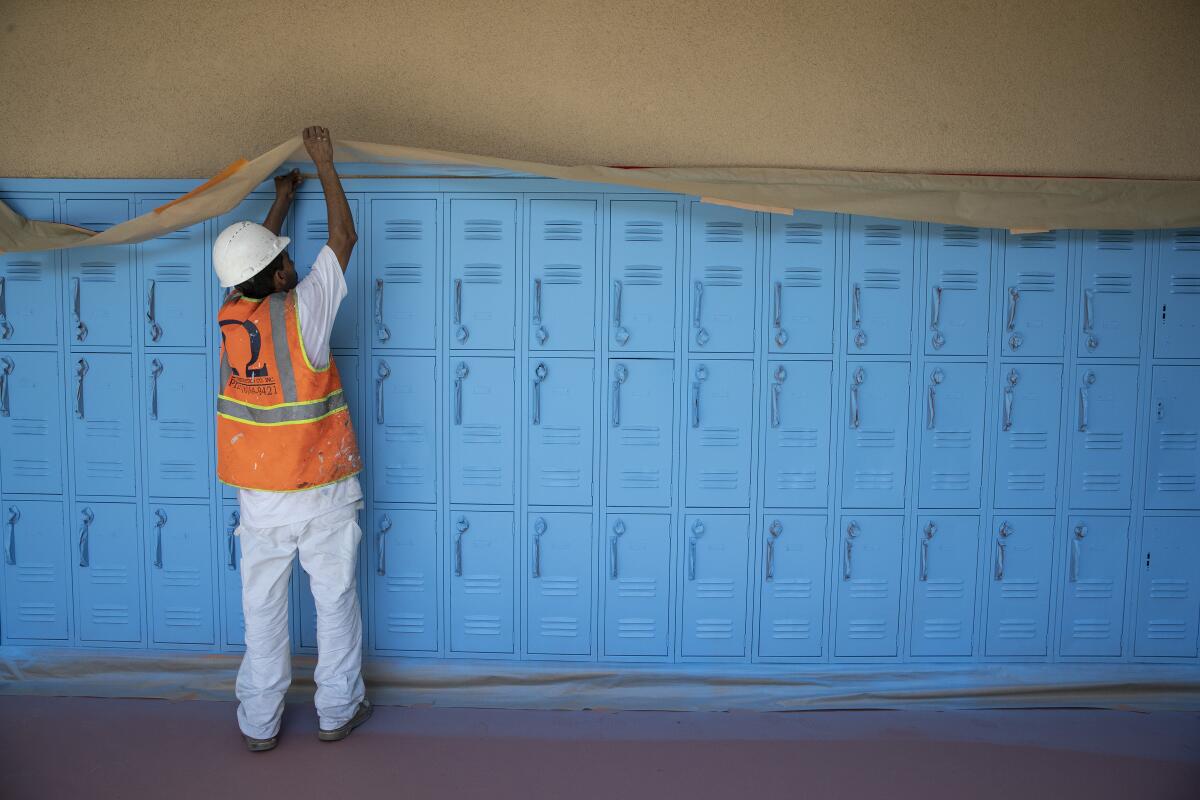Endorsement: Yes on Measure RR to fund L.A. schools

- Share via
There was a time when a vote for a school bond meant the public was chipping in to build needed schools for a growing population of families. Then it meant renovating and refurbishing school buildings that had become dangerous eyesores. Remember the late 1990s days of crumbling playgrounds and trash cans strategically placed in classrooms to catch the rain?
But in the Los Angeles Unified School District, the needs of decades have been yawning and ongoing. As the school-age populations ballooned, students were squeezed into classrooms on year-round schedules that shorted instructional time. The result was several bonds for new property and buildings.
Then came the biggest school bond in history, the $7-billion Measure Q in 2008, which was more for refurbishment of old buildings than the construction of new ones. The need for renovations was genuine, but the borrowing was simply too much.
Public trust in the measure eroded when, years later, then-Supt. John Deasy proposed spending more than a billion dollars on overpriced iPads for all students, loaded with expensive but problematic educational software. The program bombed early, saving the taxpayers many hundreds of millions of dollars.
Twelve years after Measure Q, L.A. Unified is back with a $7-billion bond proposal, Measure RR. But times have changed drastically, and this time the district has done a far more responsible job of listing the expenditures, including a long tally of school roofs that need replacing.
Even more important, the COVID-19 pandemic has made clear that new investments in school infrastructure and equipment are crucial right now and that the public cannot expect these to come out of a depleted general budget. In addition to the needs that already existed — earthquake retrofitting, access for disabled people and so forth — conducting COVID-era lessons safely in classrooms calls for new expenditures. Top-of-the-line air systems, personal protective gear, possibly plexiglass separations or shaded outdoor “classrooms.” This is not the time to skimp on equipping local schools.
The pandemic also has shown that although the way Deasy went about buying technology was wrong, his basic idea was right. L.A. Unified students have been set up with laptops and tablets in recent months for their remote lessons. The giveaways were patched together under tight conditions. Students also have broadband for now.
Truth is, students have long needed these devices as well as internet access — just not $800 hyper-equipped iPads. Low-income students have been at a terrible disadvantage without them. COVID-19 shone a harsh light on an unacceptable learning divide.
It’s unclear whether bond money, which generally must be spent on durable goods reflecting the 30-year life of the bond payments, can be spent on electronic devices that generally don’t last more than a few years and broadband access, which is a continually renewed item. But the time has come for us to yank our brains out of 20th century ideas of school equipment and realize that computers (and the ability to connect with them) are as vital to education as desks. The Legislature should take the first steps toward making this kind of bond expenditure explicitly legal. For that matter, there’s no reason bond money shouldn’t be used for basic school supplies such as pencils, notebooks, tissues and similar items. Society has to end the days of teachers shelling out their own money for what schools should provide.
Measure RR would cost about $22 per $100,000 of property value, or close to $110 for a $500,000 home. But the payments would not be made on top of remaining debt from Measure Q. It would be layered in bit by bit, so that taxpayers would not see their tax bills changed by the new measure. Of course, their bills wouldn’t go down, either, once the previous debt is paid off.
Maybe they never would go down. Measure RR doesn’t take care of all the deferred work needed on school property, but it’s a big step forward. We wholeheartedly endorse it.
More to Read
A cure for the common opinion
Get thought-provoking perspectives with our weekly newsletter.
You may occasionally receive promotional content from the Los Angeles Times.










